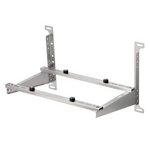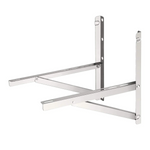
Confused about whether you should use a dehumidifier during winter months? Some people will tell you that you shouldn’t while others will tell you that you should. So, who’s right and who’s wrong? Find out more below.
Checklist for dehumidifier use in Winter
In order to decide whether you should use a dehumidifier in winter or not, you need to take two variables into account: room temperature and indoor relative humidity.

- 40°F or lower: Don't use your dehumidifier.
- Higher than 40°F: You can use your TOSOT dehumidifier.

During certain times of the year, areas with high humidity in the summer don’t necessarily have high humidity during the winter. Remember that very low humidity isn’t healthy either and can increase chances of viruses spreading around. If your indoor relative humidity levels are below 30% you will need a humidifier instead.
- Lower than 30%: Don’t use your dehumidifier. Use a humidifier instead.
- Between 35% and 55%: You can use your dehumidifier. Some recent studies suggest that mold can begin growing at an indoor relative humidity of 45%.
- Higher than 55%: Use your dehumidifier.
Now, combine both temperature and humidity to decide whether to use your dehumidifier or not. This table makes it more simple:
Table 1- Using a dehumidifier in winter
You're all set now! Remember to keep safe humidity levels during all seasons to protect yourself, your family, and your home. Comfort and good health are essential for a quality life, and a life well-lived it's what it's all about!
Need a dehumidifier?
Get yours here.
Need a humidifier?
Get your humidifier here.
You may also want to read:
How to Select the Correct Dehumidifier
10 Reasons why Humidity is Affecting your Quality of Life
To get more tips like these, sign-up for our newsletter here:
TOSOT Dehumidifier Reviews
"It rains lots where I live. My place always has a damp chill and a humidity level over 60%. . I am so happy with my Tosot (...) There is now no condensation in my bedroom windows. It isn't too heavy to move. I am very happy with it. thank you." Frances M. Nov. 28th, 2018

Use information at your own risk: The information presented is intended for educational purposes only and is not intended to be a substitute for professional advice, diagnosis or treatment. Never disregard professional medical or home improvement advice. The information and suggestions should be discussed with a professional. You are responsible for independently verifying the information if you intend to rely upon or use it in any way. You use all information at your own risk.



 Source:
Source: 




1 comment
informative article.helpfull.Can one dehumidifier do a whole house?